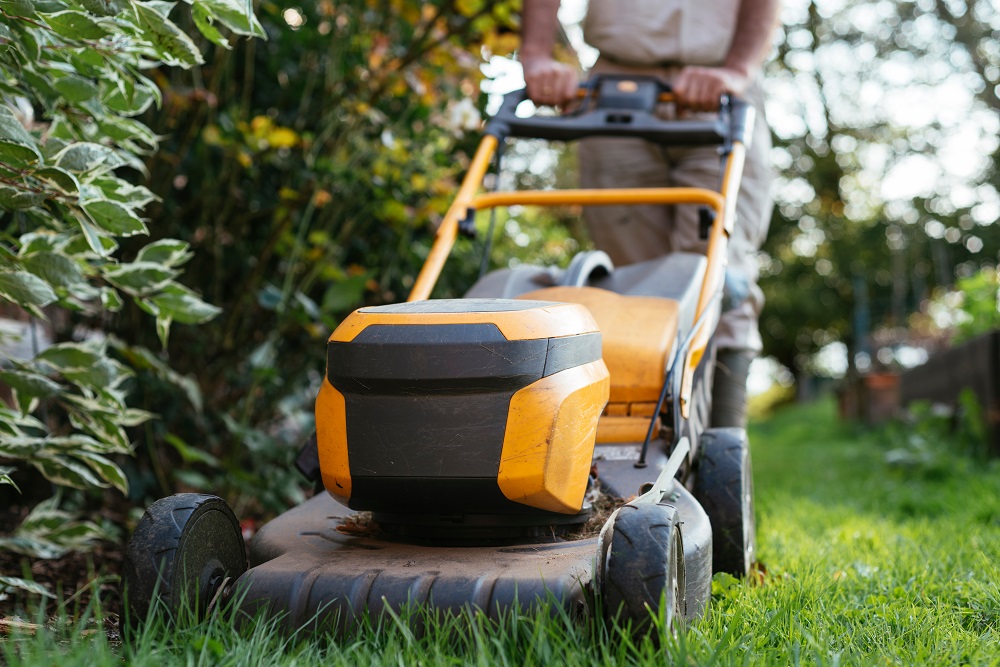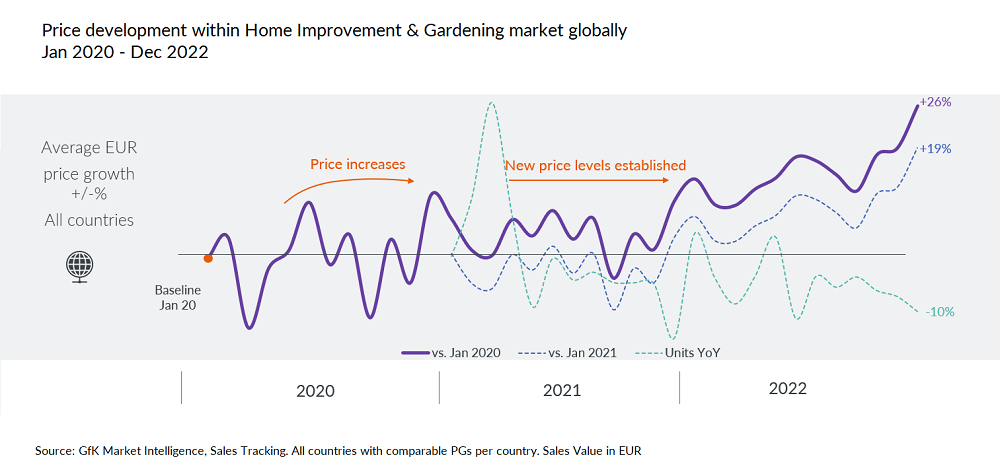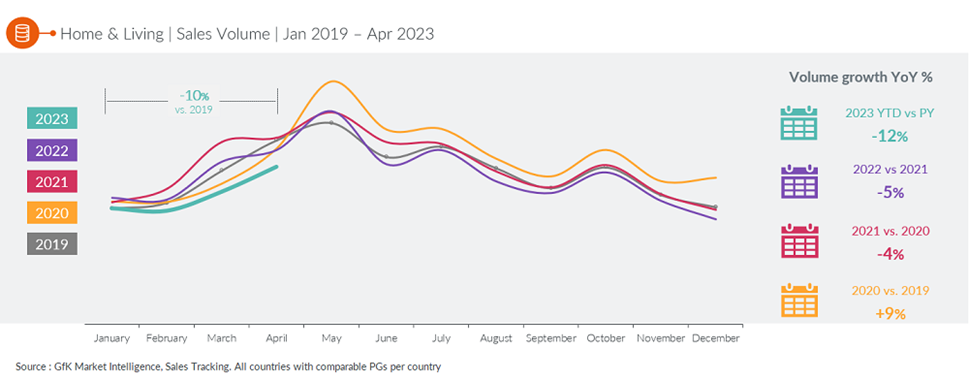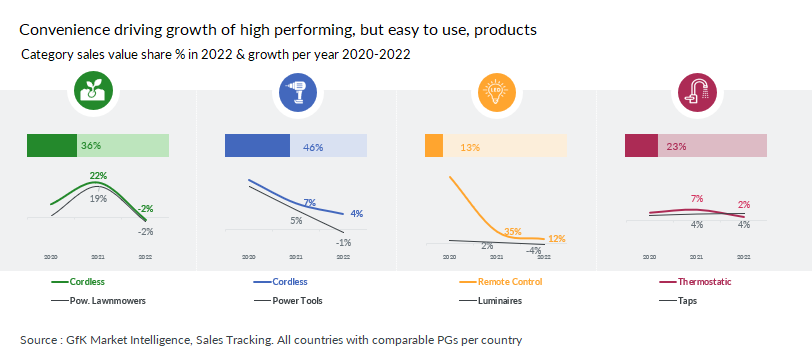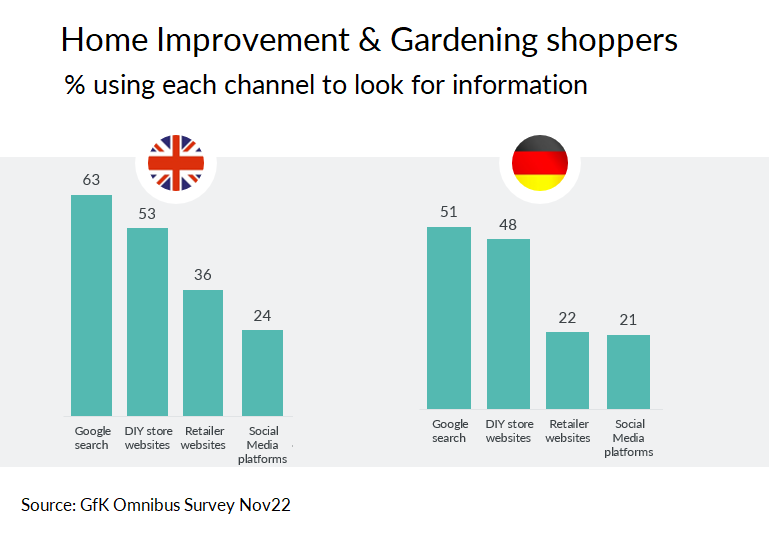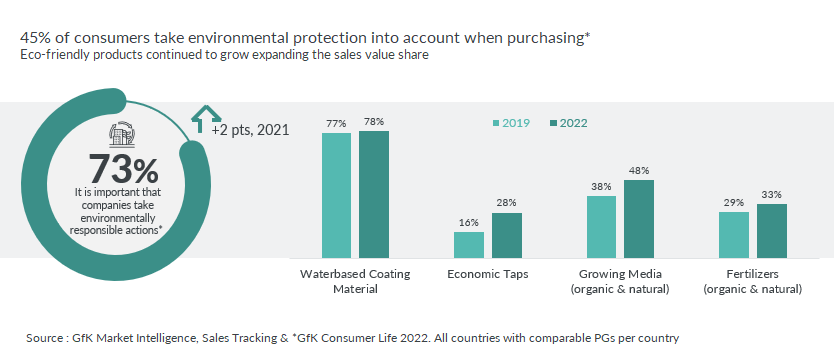Polarization between value and volume of sales within home improvement & gardening continues mainly due to increased prices and inflation
Despite consumers’ economic confidence plummeting last year, sales of home improvement, gardening and DIY products grew +5% in value (Euros) compared to 2021. This global market growth was due to a significant increase in spend by consumers in Emerging Asia, Middle East & Africa and Latin America offsetting the deceleration seen in Western Europe, China and Developed Asia.
€39 bn turnover
+5% growth rate
The uplift in global sales value was driven heavily by the fact that average prices rose sharply across home improvement, gardening and DIY, in reaction to steep inflation and the increased cost of raw materials. By December last year, the average price growth globally had reached +26% compared to Jan 2020, and +19% compared to Jan 2021.
When we look at volume demand, the number of items sold continues to fall. For 2022 overall, volume sales year were down -5% compared to 2021, but were still above the 2019 level. The first quarter of this current has now fallen further, down -12% compared to that same period in 2022, which brings volume sales below pre pandemic levels for the first time.
Gardening continues to dominate, but biggest growth comes in other categories
Gardening continued as the dominant area of spend last year,, and in the first quarter of this year, but it is losing share. In contrast, the categories that really took off include Building which showed +20% year on year growth in 2022, Sanitary at +25%, and Electrical Equipment at +87%.
Looking at January to April compared to the same period last year, Sanitary and Building both continue to grow, while Electrical Equipment has dropped off.
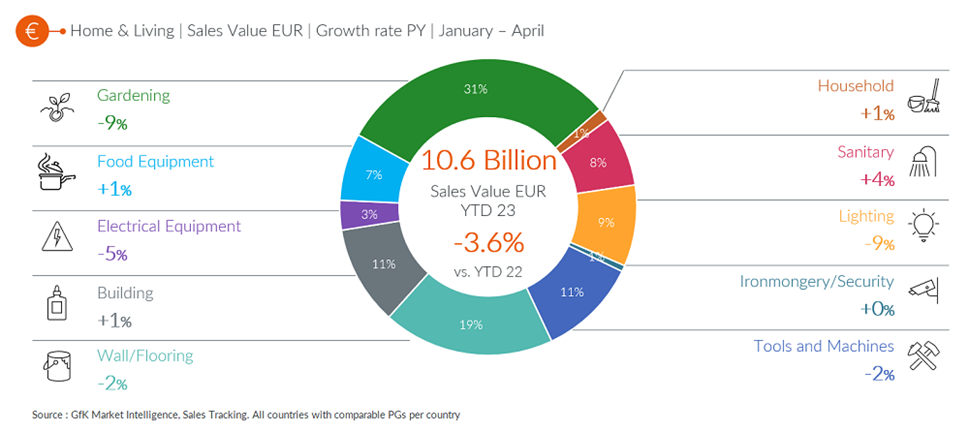
Where will we see growth, within home improvement & gardening?
Despite pressure on shoppers’ wallets, home improvement remains a focus with two-thirds of UK consumers and half of German consumers planning to renovate or decorate their home over the next 12 months1. While those figures are both somewhat down compared to the year before, this is still a significant segment of each country’s population looking to spend money on home improvement this year.
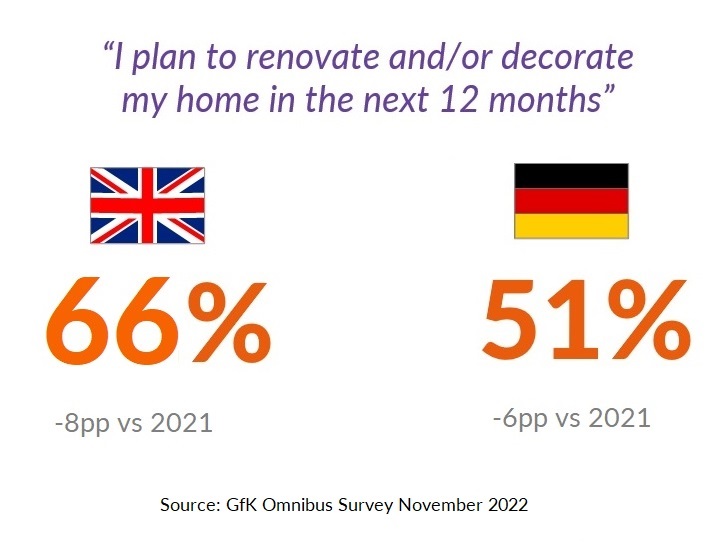
UK and German shoppers focusing on walls & flooring, and garden
For the UK, the top three areas planned for renovation or decorating are walls & flooring (38%), garden DIY (27%) and bathroom, toilet or shower area (24%). In Germany, walls & flooring and garden DIY area also the top two (26% and 18% respectively), but with lighting upgrades coming in third (16%).
This focus on garden DIY ties in with the rising interest in spending time outdoors that took off in 2020 and has continued to rise ever since. By last year, nearly half of people globally say they plan to spend time at least once a week doing gardening or yard work – up from a third in 2019.

However, actual spend on gardening is down, as people refocus their disposable income on competing areas – from rising daily living costs, to travel for commuting, holidays and so on. In this landscape, brands need to maximise their offering by tapping directly into the long-term trends that are still motivating consumers to spend.
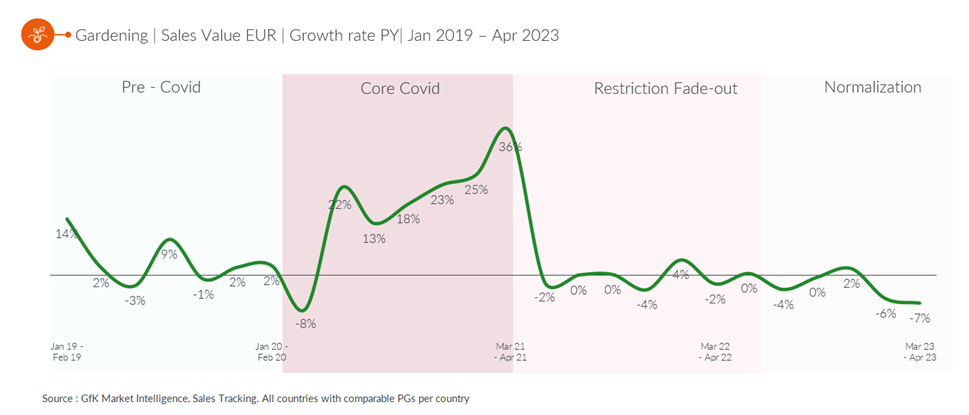
4 long term trends continuing to drive growth: convenience, security, e-commerce & sustainability
-
Convenience
Even after the peak of lockdown-driven sales, product innovations that offer higher performance alongside greater ease of use continue to perform favourably compared to their overall category. Good examples of this are cordless, remote controlled or automatic models of traditional products. -
Safety & Security
People are continuing to invest in their home environment, with increasing spend seen in categories such as door communication, intruder security, outdoor lighting, and motion detectors. -
Growth of online within Home Improvement shoppers
Online is still not nearly as important as traditional retail when it comes to the actual purchase point for Home Improvement and Gardening items. Nevertheless, its share of sales has grown +5 percentage points compared to 2019 and currently accounts for 15% of global sales (EUR). Added to this, is the increasing importance of online within the information-gathering part of shoppers’ purchase journeys. Around half of shoppers in the UK and Germany are using Google search or DIY store websites to look for information on purchases they intend to make in this area, while nearly a quarter are using social media.
-
Sustainability
Eco-friendly options within home improvement and gardening continued to grow, with shoppers focusing on environmental protection (water-based, organic & natural), and saving water.
[Explore our infographic on Europe’s eco-shoppers]
Key take-aways for manufacturers and retailers
The home improvement and gardening market needs to find ways to counter-act weakened consumer spend. Ongoing economic downturn, tighter budgets, rising household costs and competing expenses such as renewed travel, holidays and office commuting costs have combined to push DIY projects lower on people’s list of priorities for where to spend their money. An additional challenge for future market development is the exceeded demand or “affect of business cycle” as people brought forward their home-focused purchases and renovations during 2020 and 2021.
Consumers’ home focus is here to stay
Volume demand within the Home Improvement and Gardening market has dropped compared to 2021 & 2020, but it is still above the 2019 pre-pandemic level. This indicates that the increased ‘at home’ focus that people developed during lockdowns has become embedded as a longer-term interest.
Heightened price sensitivity must be addressed by showing distinct value for money
Despite people’s increased price sensitivity, value still rules. Very close to half of shoppers around the world now say that price is the most important factor in their purchasing decisions. But an equal number say they “prefer to own fewer but higher quality items”, and just under that number believe it’s still important to indulge or pamper themselves on a regular basis.
The key is communicating specific value for money. People are selecting carefully where they spend their more limited budget, but products that offer genuine benefits to the user, such as increased levels of convenience, performance, durability and sustainability can still command a premium price.
Online channel growth continues to meet the needs of digital consumer, especially to engage younger generations
Home improvement and gardening shoppers are also increasing their use of online sites within their shopper journey. Across Germany and the UK, the top sources that these specific shoppers are using when hunting for information are Google search, DIY stores’ own websites, retailers’ websites and social media platforms. This is a growing opportunity for brands who have invested in building a strong digital communication strategy to deliver the messaging identified above – especially to reach younger shoppers.
Liked this? Why not read this next:
![]()
